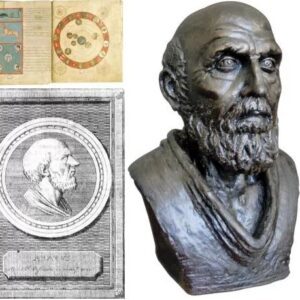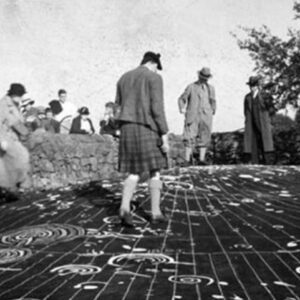In the last decade of the 16th century, the renowned general Toyotomi Hideyoshi, who held actual power in Japan, launched two large-scale military campaigns on the Korean Peninsula to fulfill his ambition of dominating the region.

Toyotomi Hideyoshi, the second “Great Unifier” of Japan, once dreamed of conquering China.
This was the first time in Japanese history that the country set its sights on expanding its influence beyond East Asia. Toyotomi Hideyoshi, a highly influential figure in Japan, was known as the country’s second “Great Unifier” (the first being Oda Nobunaga). Before launching the military campaigns on the Korean Peninsula, Hideyoshi spent around 10 years tirelessly fighting to unify Japan, achieving this goal in 1591 at the age of 54. With unification complete, he set his sights on more ambitious objectives. In 1577, when he was still a general under Oda Nobunaga, Hideyoshi dreamed of a day when Japan could conquer China. As the Thai-Chin Daijin, Hideyoshi held complete power in Japan, while the Japanese emperor had no real role to play.

In an enthralling first conquest campaign, over 200,000 Japanese troops once stormed the Korean Peninsula.
The first thing Hideyoshi did was to send a delegation to the Korean Joseon Dynasty under King Sonjo to restore diplomatic relations. Relations between the two countries had been strained for years due to Japanese pirates frequently looting Korean ships and harbors.
In addition to restoring relations, Hideyoshi wanted Korea to open a path for Japanese forces to attack the Ming Dynasty in China. Korea rejected this proposal, as it was a tributary state of China at the time.
King Sonjo then sent a delegation to Japan to learn about Hideyoshi’s intentions. The delegation returned with conflicting information, but King Sonjo heeded the advice of his ministers that Japan would not attack Korea. As a result, Korea was left without any defenses.
During this period, Hideyoshi gathered 225,000 troops and set the date for the invasion of Korea in the spring of 1592. The core of the army was composed of elite samurai, who had battle experience from years of civil war.
The remainder of the troops were conscripts, mostly mobilized from various regions in Japan. The army was fully equipped with cannons, matchlock guns, longswords, and led by capable commanders, primarily local lords who pledged loyalty to Hideyoshi.

The famous ironclad ships of this era led to the Japanese forces being at a disadvantage in naval battles
Hideyoshi ordered the construction of a large naval base in the northwest coastal area of Kyushu Island, the closest part of Japan to Korea.
He mobilized 9,000 sailors to transport soldiers across the Tsushima Strait to land on the Korean Peninsula. The order to launch the military campaign was issued at the end of April 1592. The invasion began with 700 ships carrying tens of thousands of Japanese soldiers landing in Pusan. Caught off guard and overwhelmed by the enemy’s powerful weapons, the Korean forces in Pusan surrendered after a few hours.
From Pusan, Hideyoshi divided his forces into three wings, advancing northward towards Seoul. For two-thirds of the march, the Japanese forces encountered virtually no resistance.
It was only when they reached the city of Chungju (now in Chungcheongbuk-do province, central South Korea) that they met the regular Korean army led by the veteran general Sin Rip. General Sin had never faced an army equipped with firearms before. Knowing this, the Japanese forces exploited their long-range firepower to overwhelm the Korean defenders. Despite his fierce resistance, General Sin ultimately died in battle.
Upon hearing that Chungju had fallen, King Sonjo evacuated Seoul and moved northwest towards the Imjin River. In Seoul, the capital of the Joseon Dynasty collapsed just three weeks after Hideyoshi launched his military campaign.
However, Korea did not surrender easily. Admiral Yi Sun-sin was one of the most famous generals of Korea during this period. He built a powerful navy, possessing one of the first ironclad ships, far superior to any wooden ship the Japanese navy had at the time.

In an enthralling turn of events, the largest territory controlled by Japan on the Korean Peninsula was achieved in 1592.
In the first year, Admiral Yi participated in 10 naval battles, defeating the Japanese forces. In the Battle of Okpo in June 1592, the Korean fleet sank 31 of the 50 Japanese warships. In the five subsequent battles, Japan lost 83 ships, while Korea suffered minimal losses. In most of these naval battles, Admiral Yi’s fleet was outnumbered, but the quality of the Korean ships was far superior.
Under Admiral Yi’s leadership, Korea turned the tide by almost entirely cutting off Japan’s maritime supply lines.
On land, Korea carried out guerrilla warfare, causing the Japanese forces to suffer heavy casualties. As the Japanese forces approached the border between Korea and China, the Ming emperor, Emperor Wanli, decided to intervene.
In February 1593, 50,000 Ming troops attacked the Japanese forces in Pyongyang, pushing them back to Seoul before the conflict reached a stalemate. The Ming forces controlled the northern part of the Korean Peninsula, while the Japanese forces controlled the south, from Seoul to Pusan.
Japan and China then held peace negotiations. After Emperor Wanli threatened to mobilize 400,000 troops, Hideyoshi agreed to withdraw his forces from Seoul as a gesture of goodwill. The Japanese forces remained only in the coastal areas around Pusan.
Hideyoshi believed that Japan had been victorious in its campaign to conquer the Korean Peninsula and sent a series of demands to the Ming emperor. These included the cession of four southern Korean provinces to Japan, a marriage between the Ming emperor’s daughter and the Japanese emperor, and a Korean prince to be sent to Japan as a hostage.
In Beijing, Ming officials secretly concealed the letter and fabricated a forgery, claiming that Hideyoshi sought peace and wanted Japan to become a vassal of China.
This led to a misunderstanding between Emperor Wanli and Hideyoshi. In 1596, a Chinese delegation returned to Japan, agreeing to make Japan a vassal without mentioning Hideyoshi’s previous demands. Enraged by this, Hideyoshi planned a second invasion of Korea.
Japan launched its second campaign on August 27, 1597. This time, Hideyoshi mobilized 100,000 troops and 1,000 warships to support the 50,000 Japanese forces already in Pusan.
At this stage, the Japanese navy regained the upper hand as Admiral Yi had been imprisoned earlier. However, the Japanese forces could not withstand the large number of Ming troops on the Korean Peninsula, failing to even reach Seoul and having to retreat to Pusan. The situation worsened when Admiral Yi was reinstated, boosting the Korean navy’s morale.

Of the 300,000 Japanese troops that landed on the Korean Peninsula, what was their fate? Since the Ming dynasty sent more than 50,000 troops to directly confront the Japanese forces, the balance of power on the Korean Peninsula shifted.
In Japan, Hideyoshi suddenly died on September 18, 1598. Japanese officials then considered ending the war in Korea. After three months of trying to hold Pusan, the Japanese forces finally withdrew completely from the peninsula.
In the Battle of Noryang on December 16, 1598, the last major battle between Japan and Korea, more than 200 Japanese warships were sunk. However, Korea also suffered an irreplaceable loss when Admiral Yi was fatally wounded in action.
In the seven years of Hideyoshi’s campaign to conquer Korea, the Japanese forces faced difficulties both at sea against the Korean navy and on land against the vast Ming army.
Japan’s first attempt to conquer China ended without any achievements, with Japan suffering losses of around 100,000 troops, according to research from Hawaii.edu.
The failure of the campaign and Hidey





